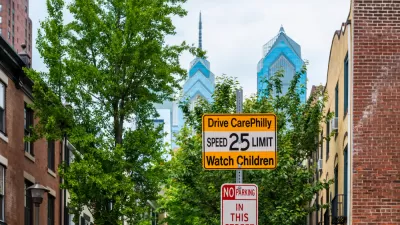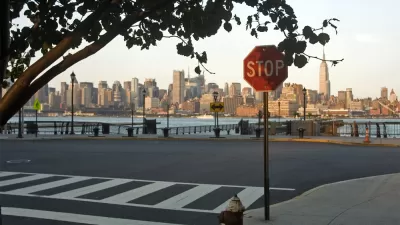Speed limits are currently determined by a calculation that considers only the status quo of vehicular velocity. Standard practices for speed limit setting and legislators should prioritize the safety of community members, according to this article.

Tiffany Chu, founder of transportation company Remix, asserts that American we need to rethink the way we set speed limits in the United States. While transportation laymen may hope that speed limits are set by a calculation determining the safest rules for traveling by car in a given space, the reality it that safety considerations are simply not a part of the calculation. Instead, says Chu, speed limits are set "by the speed at or below which 85 percent of the motorists drive on a given road, an outdated guideline promoted by the Federal Highway Administration (FHWA)."
Chu reminds that speeding has played a part in about a third of traffic collision fatalities in the United States over the past two decades and that, given these statistics, government agencies need to revise the methods for setting speed limits and introduce speed-reducing street design mechanisms on busy roadways.
For Chu, design is at the center of the solution, pointing to a July report released by the National Association of City Transportation Officials (NACTO), which advocates for speed limits set by criteria like density and activity level in addition to designing slow zones. "We cannot usher in a multimodal future without lowering speeds and making streets safe for all users. We must support the work of those undoing harmful legacy methods, and encourage the adoption of policies that embrace and emphasize design," advises Chu.
FULL STORY: Why Slower Commutes Can Be A Good Thing

Planetizen Federal Action Tracker
A weekly monitor of how Trump’s orders and actions are impacting planners and planning in America.

Congressman Proposes Bill to Rename DC Metro “Trump Train”
The Make Autorail Great Again Act would withhold federal funding to the system until the Washington Metropolitan Area Transit Authority (WMATA), rebrands as the Washington Metropolitan Authority for Greater Access (WMAGA).

The Simple Legislative Tool Transforming Vacant Downtowns
In California, Michigan and Georgia, an easy win is bringing dollars — and delight — back to city centers.

The States Losing Rural Delivery Rooms at an Alarming Pace
In some states, as few as 9% of rural hospitals still deliver babies. As a result, rising pre-term births, no adequate pre-term care and harrowing close calls are a growing reality.

The Small South Asian Republic Going all in on EVs
Thanks to one simple policy change less than five years ago, 65% of new cars in this Himalayan country are now electric.

DC Backpedals on Bike Lane Protection, Swaps Barriers for Paint
Citing aesthetic concerns, the city is removing the concrete barriers and flexposts that once separated Arizona Avenue cyclists from motor vehicles.
Urban Design for Planners 1: Software Tools
This six-course series explores essential urban design concepts using open source software and equips planners with the tools they need to participate fully in the urban design process.
Planning for Universal Design
Learn the tools for implementing Universal Design in planning regulations.
Smith Gee Studio
City of Charlotte
City of Camden Redevelopment Agency
City of Astoria
Transportation Research & Education Center (TREC) at Portland State University
US High Speed Rail Association
City of Camden Redevelopment Agency
Municipality of Princeton (NJ)





























